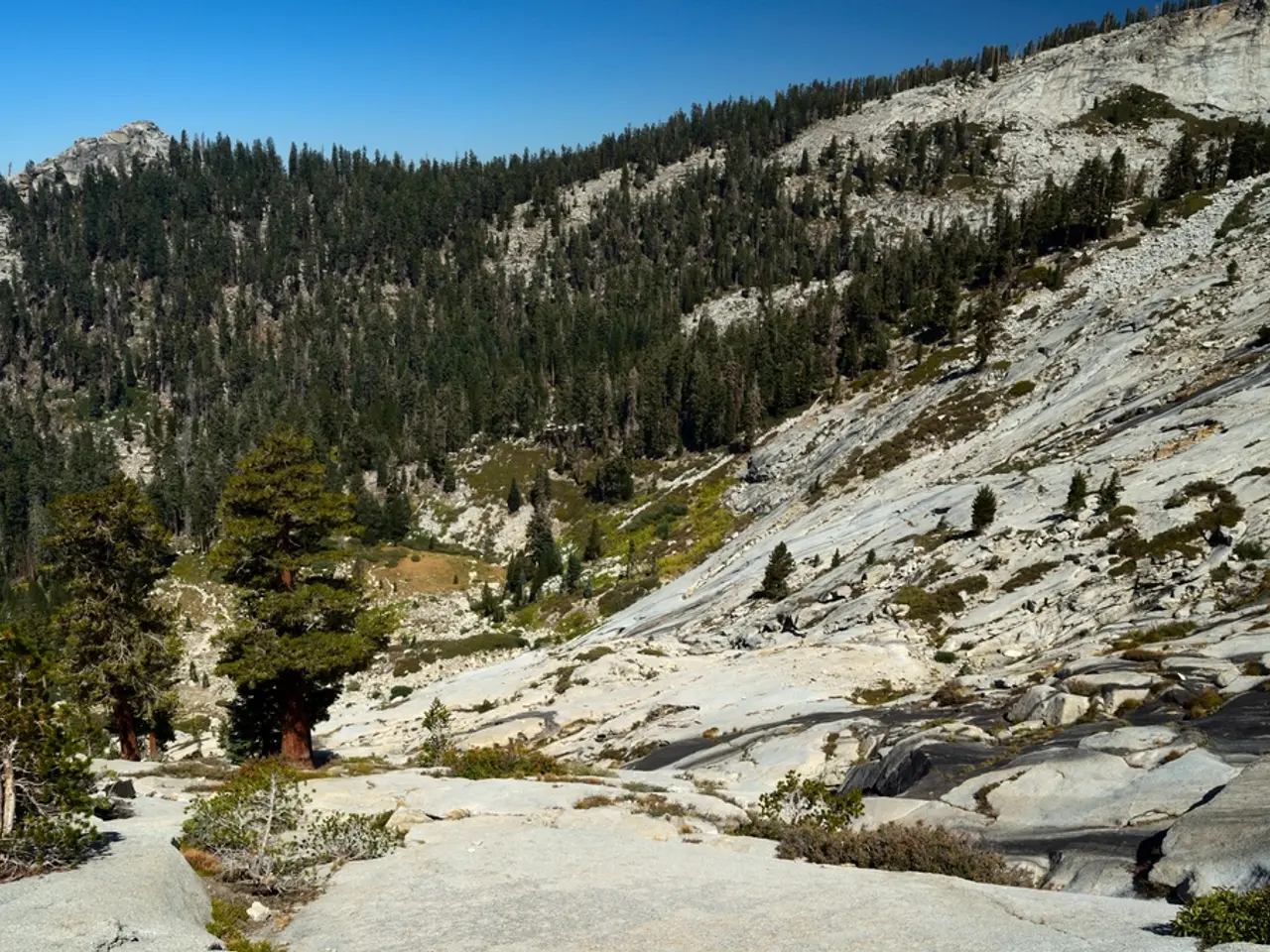Geological anomaly beneath the Appalachian range originated during the separation of Greenland from North America; its trajectory points towards New York.
In a groundbreaking study, researchers have shed new light on the mysterious hot zones beneath the Earth's crust, particularly the Northern Appalachian Anomaly and its twin beneath north-central Greenland.
These ancient heat anomalies, such as the Northern Appalachian Anomaly and the hot blob beneath north-central Greenland, have a significant impact on the dynamics of continental ice sheets, according to the findings.
The Northern Appalachian Anomaly, a hot zone located 125 miles deep and stretching 220 miles across New England, was formed approximately 80 million years ago. It is estimated to reach New York in 10 million to 15 million years.
Hot blobs, as they are called, are created when material from Earth's mantle rises to fill gaps in the crust left by rifting. The hot blob beneath north-central Greenland creates heat currents beneath the Greenland Ice Sheet, influencing how the ice moves and melts today.
Similarly, the hot zone beneath the Appalachian Mountains may have contributed to the uplift of these mountains. Once the hot blob leaves the Appalachians, Earth's crust there will settle again, leading to erosion and a gradual lowering of the mountains' elevation.
Interestingly, the formation of these hot zones is linked to continental breakups. The Northern Appalachian Anomaly, for instance, was formed during the separation of Greenland from North America. The hot blob beneath north-central Greenland is its "twin," formed during the same continental breakup event.
The team's simulations showed that the movement of the hot blobs was consistent with previous estimates. These findings suggest that continent breakups and other major geological events can continue to influence the planet for thousands, and even millions, of years.
The new research also challenges previous theories suggesting the hot zones were leftovers from continental drift events. For instance, the hot zone beneath the Appalachians was not a leftover from North America breaking away from Africa around 180 million years ago, as previously thought.
The study's co-author, Derek Keir, stated that the discovery of hot blobs spreading thousands of kilometers inland makes us rethink what we know about the edges of continents, both today and in Earth's deep past.
Moreover, hot blobs could explain rare volcanic eruptions that bring diamonds to Earth's surface, according to the statement.
Despite the significant advancements, the author of the study on the formation of the large block of hot Earth rocks under the Appalachian Mountains is not explicitly provided in the available search results.
In conclusion, the study provides valuable insights into the role of hot blobs in shaping the Earth's geology, from influencing the movement of ice sheets and the uplift of mountains to potentially explaining rare volcanic events. The findings underscore the importance of continued research into Earth's deep mysteries.
Read also:
- visionary women of WearCheck spearheading technological advancements and catalyzing transformations
- Recognition of Exceptional Patient Care: Top Staff Honored by Medical Center Board
- A continuous command instructing an entity to halts all actions, repeated numerous times.
- Oxidative Stress in Sperm Abnormalities: Impact of Reactive Oxygen Species (ROS) on Sperm Harm








